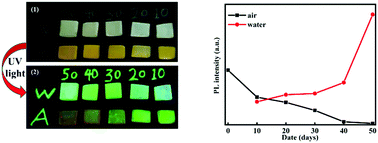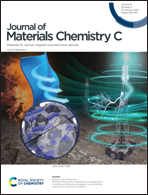Luminescence enhancement of CsPbBr3 quantum dot glasses induced by two unexpected methods: mechanical and hydration crystallization
Abstract
Theoretically, the realization of phase transformation in glass requires enough energy to overcome a certain barrier. Conventionally, the transition from amorphous to crystalline phase is realized by controlling the crystallization process in the heating process. However, little progress has been made in the study of mechanical crystallization and hydration crystallization, which do not involve excessive energy transition processes. In this work, CsPbBr3 quantum dot glasses with good thermal stability and water stability were firstly obtained by mechanical crystallization and hydration crystallization methods, which are completely different from the traditional methods. An intense 523 nm emission with a long lifetime of 75.2 ns was observed in the CsPbBr3 quantum dot glass prepared under mechanical stress. Interestingly, a strong green emission was found in the CsPbBr3 quantum dot glass prepared under hydration conditions. Furthermore, the CsPbBr3 quantum dot glass obtained by mechanical devitrification shows the phenomenon of luminescence enhancement with the extension of the observation time in water, which further verifies the phenomenon of the hydration crystallization. In short, the present work not only provides a novel channel for the future study of quantum dots but also brings a significant revolution to the production of quantum dot glass materials.



 Please wait while we load your content...
Please wait while we load your content...